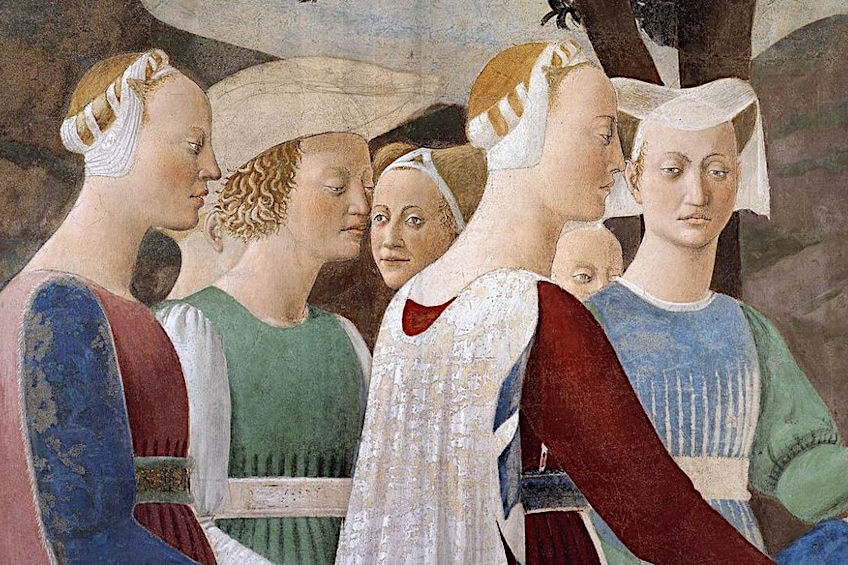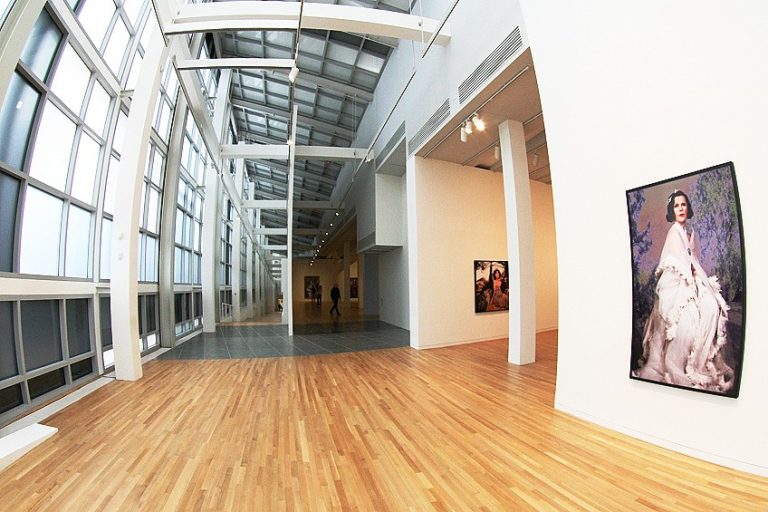Piero della Francesca – The Original Renaissance Man
Italian painter, Piero della Francesca, used geometry and mathematical theory along with Renaissance Humanism to produce some of the most striking religious artworks of the early Renaissance period. The utilization of foreshortening and linear perspective in Piero della Francesca’s paintings provided biblical scenes and stories with life, and his copying of classical compositions and figures lends the solidity and gravity of his work, despite their sometimes-obscure topics. Piero della Francesca, now recognized as one of the most prominent Italian painters of the 15th century, was largely overlooked for several decades. Let us learn more about his lifetime and art by examining Piero della Francesca’s biography.
A Piero della Francesca Biography
| Name | Piero della Francesca |
| Nationality | Italian |
| Date of Birth | c. 1420 |
| Date of Death | 12 October 1492 |
| Place of Birth | Borgo San Sepolcro, Italy |
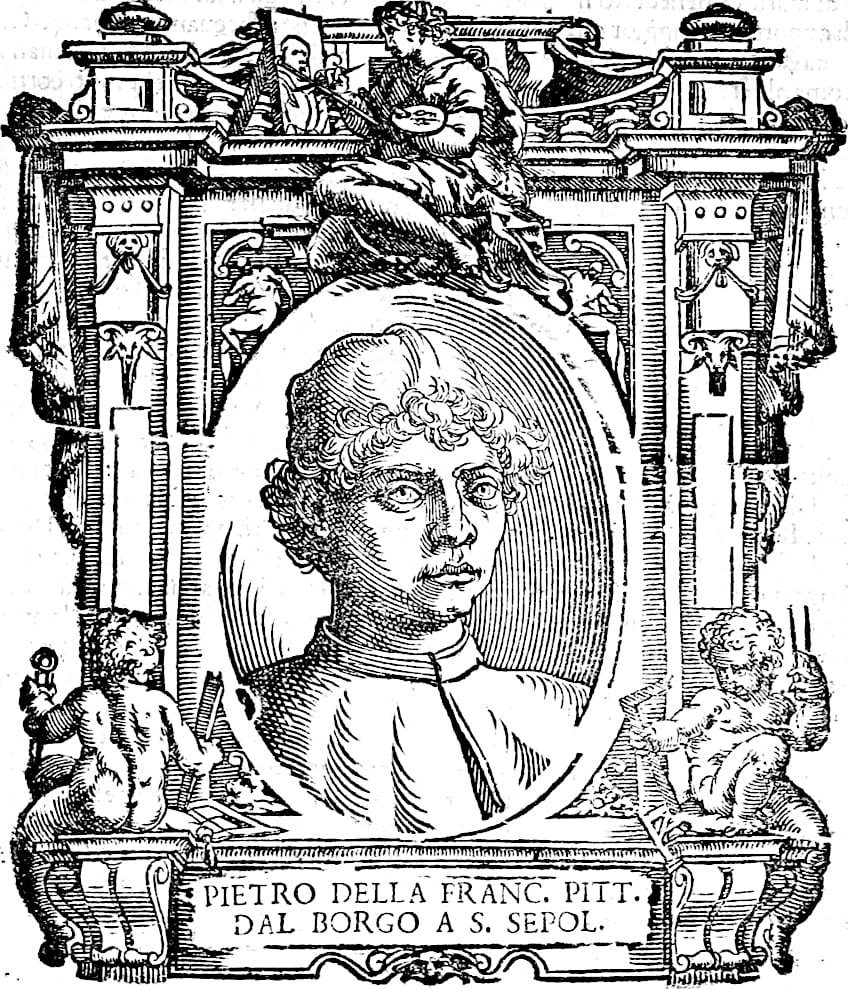
Piero della Francesca’s lifelong fascination with mathematics led him, together with Masaccio and Brunelleschi, to design illusionistic environments in which precisely proportioned and scaled humans performed sacred and secular activities.
This logical space represented a humanistic perspective in which humans were the benchmark against which all other things were measured.
While Piero della Francesca created numerous altarpieces and murals for church interiors, he also benefited immensely from a growing secular market. His methodical examination of perspective had very little impact on his peers but came to be acknowledged as one of the most significant contributions to the Italian Renaissance in the 20th century.
Childhood
The artist was born in Borgo Santo Sepolcro, Italy, to Romana di Perino da Monterchi and Benedetto de’ Franceschi, from the Tuscan and Florentine Franceschi noble family.
His father passed away before he was born, and he was given the name Piero della Francesca which was the name given to his mother, who was known as “la Francesca” because of her union with the Franceschi family.
Romana helped him with his mathematics and art studies. He was most likely an apprentice to the local artist Antonio di Giovanni Anghiari since it is mentioned in payment records that he worked with the artist in 1432 and then again in 1438. Certainly, he was aware of the works of the Sienese painters who were present in San Sepolcro during his childhood.
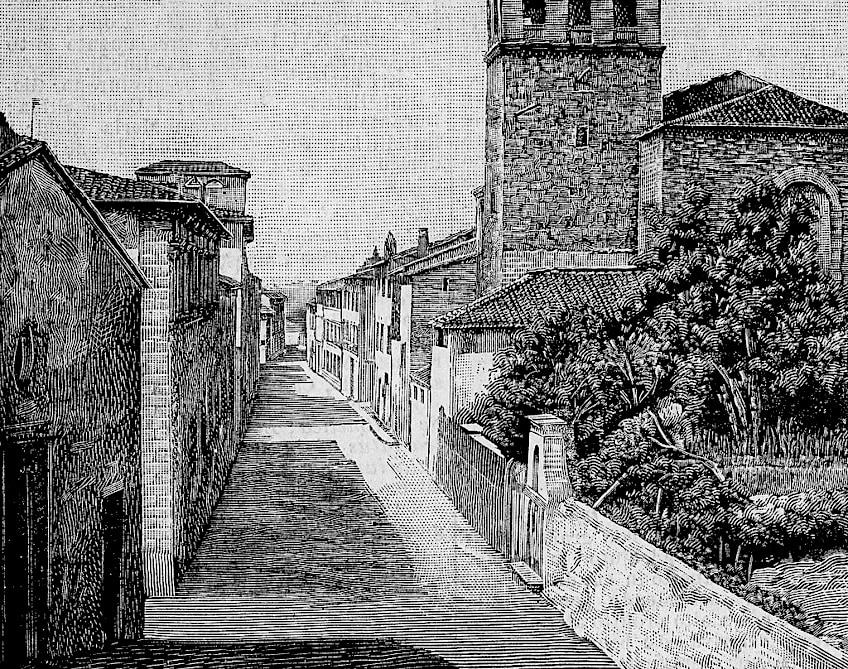
Early Formative Period
Piero della Francesca served as an assistant to Domenico Veneziano in 1439 when he was painting murals at the Santa Maria Nuova hospital in Florence, at a time when the early Renaissance style was flourishing. He most likely examined the statues of Luca della Robbia and Donatello in Florence, as well as the artworks of Fra Angelico and Masaccio and the architecture of Filippo Brunelleschi, and it is believed that he examined a theoretical dissertation on art by the architect and Humanist Leon Battista Alberti.
Domenico Veneziano, whose own paintings reveal a Renaissance focus on color and light as aspects of visual structure, would undoubtedly have pointed him to these luminaries. This encounter with Florence’s early Renaissance art laid the groundwork for the artist’s own style.
Piero della Francesca was appointed to the municipal council of Sansepolcro in 1442. Three years after that, he was commissioned to create a polyptych. His debt to the Florentines Masaccio and Donatello, his affinity for geometric shapes, and the precision and thoughtfulness with which he produced are all evident in the Misericordia Altarpiece, which was not finished until 1462.

The artist appears to have required occasional escape to the regional seclusion of Sansepolcro. For the remainder of his life, he moved between the peace of Sansepolcro and interaction with Renaissance humanism in intellectual and artistic centers like Rimini and Ferrara.
Piero della Francesca most likely worked for Marchese Leonello d’Este in Ferrara around 1448, where he was possibly inspired by northern Italian painting. In 1451, he completed a magnificent heraldic painting of Sigismondo Malatesta Before St. Sigismund in the Tempio Malatestiano, a church erected following Alberti’s architectural ideas.

The Baptism of Christ (c. 1448) also dates to this early formative phase before 1451. This artwork, which was most likely the center panel for an altarpiece for the Pieve of Sansepolcro, displays features that remained consistent in Piero della Francesca’s paintings until his death. The powerful mass of the figures, the spatial clarity, and, most importantly, the extremely unique use of color and light – his works look almost “bleached” – characterize a style that has all the components of the Renaissance but remains one of the most distinctive of all times.
Mature Period
Piero della Francesca’s developed style may be seen in paintings created in the choir of St. Francesco in Arezzo. The decorations were started in 1447 by the old Bicci di Lorenzo, who passed in 1452; Piero della Francesca was apparently hired to finish the work soon after. By 1466, the epic cycle The Legend of the True Cross had been completed.
Piero della Francesca’s paintings at their best are distinguished by their simplicity and purity of structure, regulated use of perspective, and sense of peace. In 1454, Agnolo di Giovanni di Simone d’Angelo, a Sansepolcro burgher, ordered an altarpiece.

The artist, in typical fashion, did not finish Agostino until 1469. His passion for creating gigantic human forms through the use of sculptural lines and light is shown in the remaining panels of the altarpiece. Piero della Francesca was in Rome in 1459 to produce paintings for Pope Pius II in the Vatican. St. Luke, who was killed at the same time, was most likely carried out by helpers at the workshop he had created in Rome.
Piero della Francesca’s extended friendship with Count Federico da Montefeltro, whose highly cultivated court was known as “the light of Italy”, proved more beneficial. He painted “The Flagellation of Christ” in the late 1450s, the intended site of which is still contested by experts.
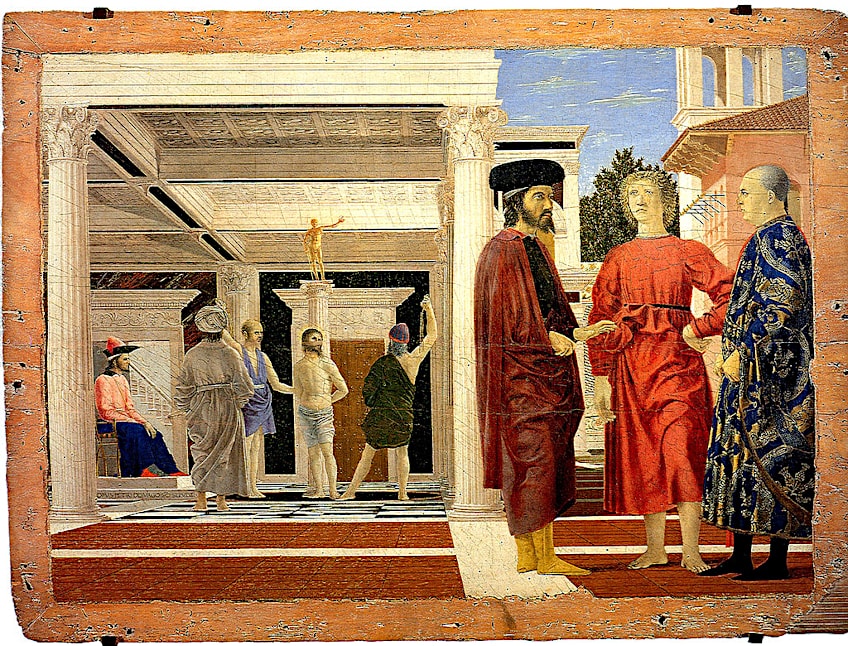
Its clear perspectival structure contrasts with the subject’s handling, in which Christ is pushed to the background and three nameless persons dominate the front. The picture’s content has been the subject of current scholarly debate. A renowned diptych picture of Duke Federico and his spouse, Battista Sforza, The Duke and Duchess of Urbino was most likely started in 1465 to honor their marriage and was only completed around 1475. The reverse, Triumphal Procession, displays the pair leading the Virtues in a triumphal parade.
His concern for visual reality may be seen in the duke’s unidealized characteristics and the stunning natural surroundings, which also reveal that he had found Netherlandish paintings.
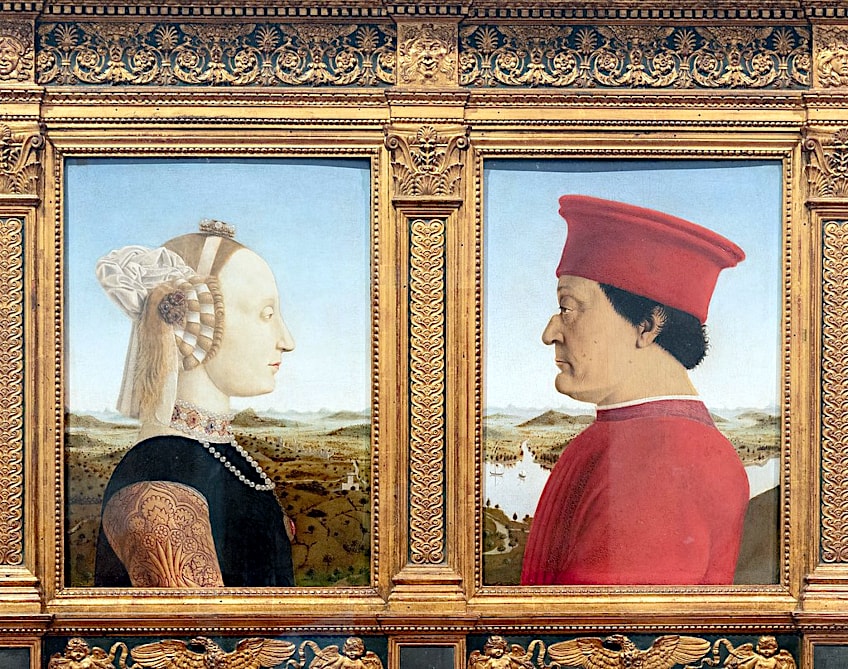
Last Years
The artist spent the last 20 years of his life at Sansepolcro, where works, now destroyed, were ordered by local churches in 1474 as well as 1478. The Nativity (1475) and an oddly built altarpiece in Perugia, Madonna with Child and Saints (1474), are among the few remaining Piero della Francesca paintings from this time. In his later years, he seemed to have stopped painting in favor of more philosophical hobbies.
From 1474 until 1482, he produced On Perspective in Painting, an art dissertation devoted to his benefactor, the Duke of Urbino.
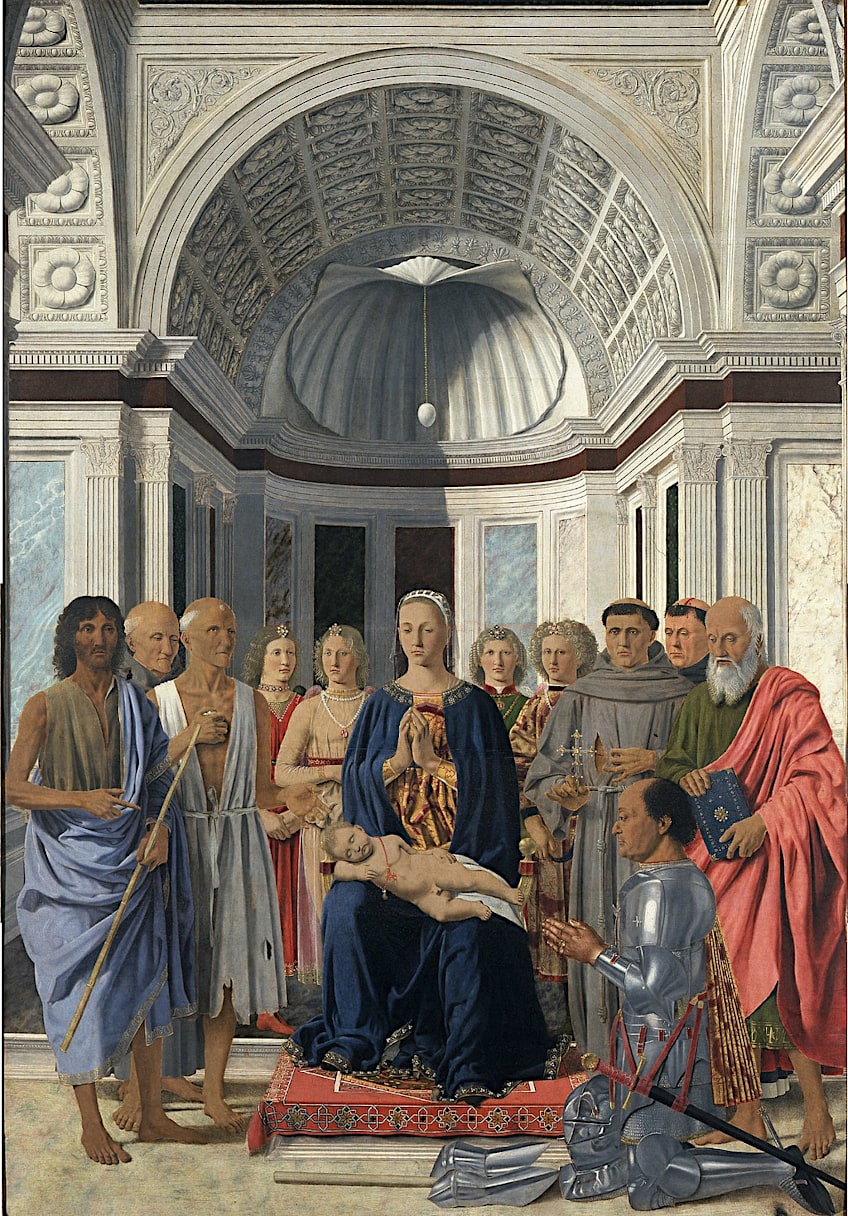
The book recalls the ancient Greek geometers Euclid and Alberti in its breadth of topics and technique of arrangement. The main document was penned and embellished by the artist with graphics on proportional, geometric, and perspectival difficulties. On the Five Regular Bodies, a second book written and illustrated around 1482, follows Pythagoras and Plato in dealing with the concept of ideal proportions.

His obsession with mathematics and geometry is a logical consequence of his own craftsmanship; his method of theoretical interpretation owes much to his role model Alberti and is comparable to that of Leonardo da Vinci; even so, the intellectual rigor and rationality of the arguments are particular to Piero della Francesca.
According to a reputable 16th-century account, the Italian painter was blind in his later years. If this is accurate, it must have happened after 1490 because some signatures from that year have survived. Furthermore, his testament from 1486 describes the painter as old yet in good health.
Piero della Francesca’s Legacy
Piero did not leave a lasting legacy in central Italy. Perugino and Luca Signorelli, two of his most notable disciples, are thought to have followed in the footsteps of earlier masters. The reserved nature of Piero della Francesca’s paintings had little impact on the experimentation of his renowned Florentine colleagues, but he was well-known for his scientific achievements.
He was recognized as “the king of our age of architecture and art” in 1497, and the writer Giorgio Vasari praised him many decades later.
Because most of his greatest works stayed in the churches and buildings in which they were created, one had to go to view them, and his overall reputation was harmed as a result. With the exception of his students, few Renaissance painters were influenced by Piero della Francesca’s paintings. This misunderstanding of his legacy was only corrected in the mid-19th century when his paintings were researched, admired, and displayed prominently in galleries and museums.
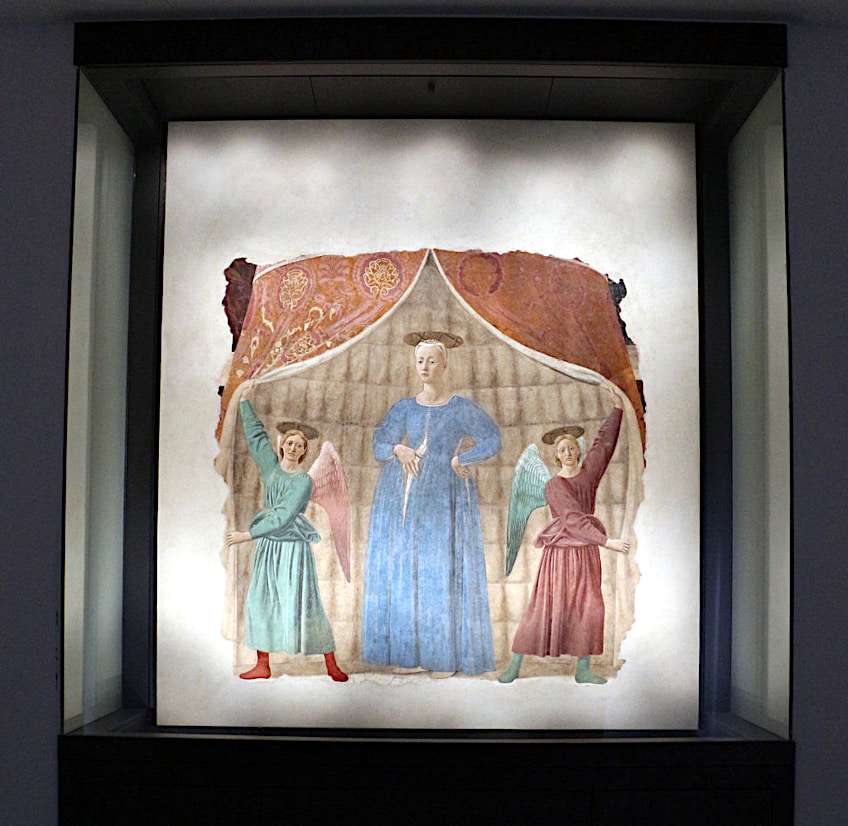
By fortuitous coincidence, the rediscovery of his artwork came before the earliest European manifestations of contemporary art. His use of perfect geometry, simplistic shapes, and color blocks, along with the profound sense of peace produced by his works, made him famous among painters from the late 1800s to today. Modern painters were inspired by his mathematically based designs and were drawn in by the ethereal grandeur of Piero della Francesca’s paintings.
Cézanne looked to his backdrop landscapes for inspiration, Seurat and Balthus looked to his arrangement, and De Chirico to his utilization of perspective.
Interpretations and Criticisms
Seven of the eight remaining works by Piero della Francesca that are believed to be located in the United States were acquired by the Frick Collection in New York for an exhibition. The artwork, Virgin and Child Enthroned With Four Angels (1470) was singled out by expert Jerry Saltz in a New York magazine article as being the best of the seven Piero della Francesca paintings on display.
When describing the piece of art, Saltz noted that Mary isn’t staring at her child but rather at the rose he is reaching for.
You start to understand the epiphany she is experiencing. The flower is seen as a symbol of beauty, affection, and dedication. Additionally, it represents Christ’s coming crown of thorns and his shed blood. This little youngster, who will die a terrible death, reaches out to accept his destiny. Mary doesn’t draw back the flower. Observing her deep-blue robe open to show red below, a sign of impending anguish and outward passion, you detect an inner torment. Christ’s right palm, which will be affixed to the crucifixion, is depicted in the exact vertical center of the picture.
Piero della Francesca’s Mathematical Work
All of Piero della Francesca’s paintings exhibit a keen interest in the theoretical analysis of perspective as well as a meditative approach to art. He had math training when he was younger, most likely for trade.
The Italian painter wrote three treatises, only three of which have been preserved to the present. Algebra, arithmetic, geometry, and creative work in both perspective and solid geometry are among the topics discussed in these publications.
Much of his work was eventually incorporated into the works of others, most notably Luca Pacioli. His theory on solid geometry was incorporated into Pacioli’s Divina Proportione, which Leonardo da Vinci illustrated. According to the memoirs of his patron, Duke Federico da Montefeltro of Urbino, he was encouraged to pursue his study on perspective.
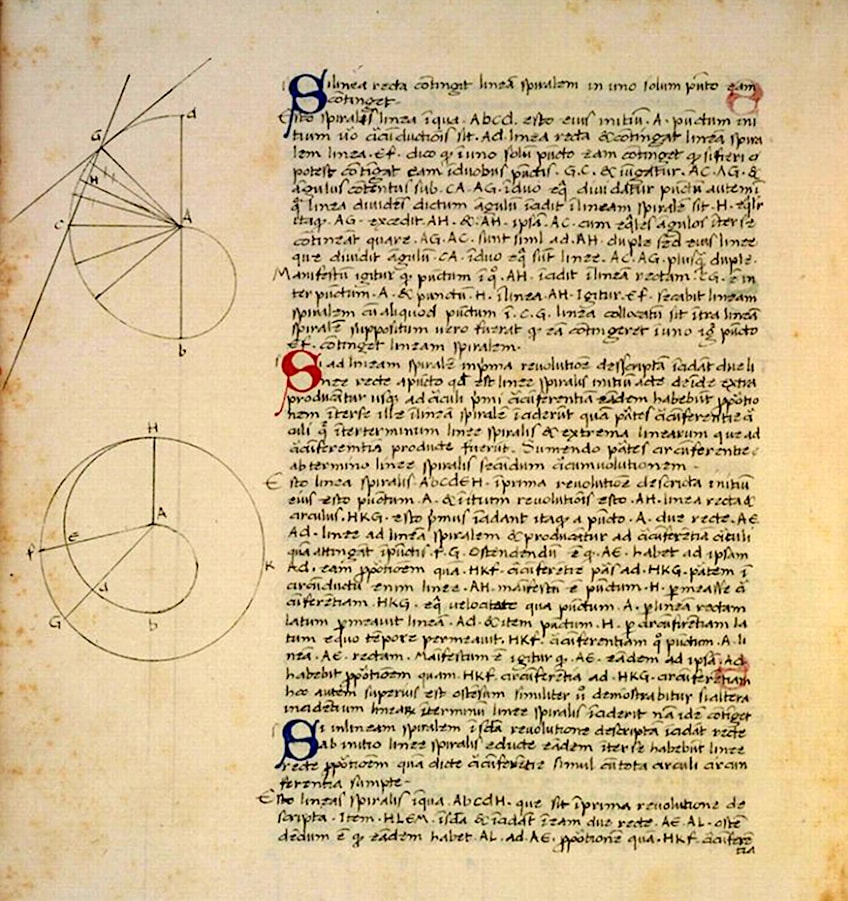
Piero della Francesca’s Art Style
Piero della Francesca was undoubtedly one of the most influential Italian artists of that century. His painting was expansive, colossal, and logical, and it symbolizes one of the early Renaissance’s grandest creative goals. His compositions’ extreme mathematical rigor emphasizes the abstract and iconic characteristics of his works and gives a tremendous religious aura to his masterpieces. To his contemporaries, he was renowned as a geometer, mathematician, and artist, however, he is today most known for his paintings.
Piero della Francesca’s creative style was greatly influenced by his experience and contacts in Florence. Piero della Francesca’s paintings were defined by their peaceful humanism and incorporation of geometric shapes, notably in foreshortening and perspective.
The Italian painter’s understanding of Florentine art is enhanced by his knowledge of Flemish art. A triptych by Roger Van der Weyden was on display at the court of Ferrara, where he stayed around 1450. His mathematical aptitude is shown in his paintings by the accurately determined volume of the figures and perfect perspective.

How One of Piero della Francesca’s Paintings Survived the War
Although The Last Supper (1498) by Leonardo da Vinci is undoubtedly the most renowned mural that was almost obliterated during World War II, the inhabitants of the Tuscan village of Sansepolcro believe they have another significant art spared during the war. They may thank Tony Clarke, a senior British artillery commander and a great admirer of art, who was meant to destroy the city but resisted orders after reading Aldous Huxley’s opinion that Sansepolcro had the greatest artwork in the world. Huxley was alluding to Piero della Francesca’s famous fresco The Resurrection (1565).
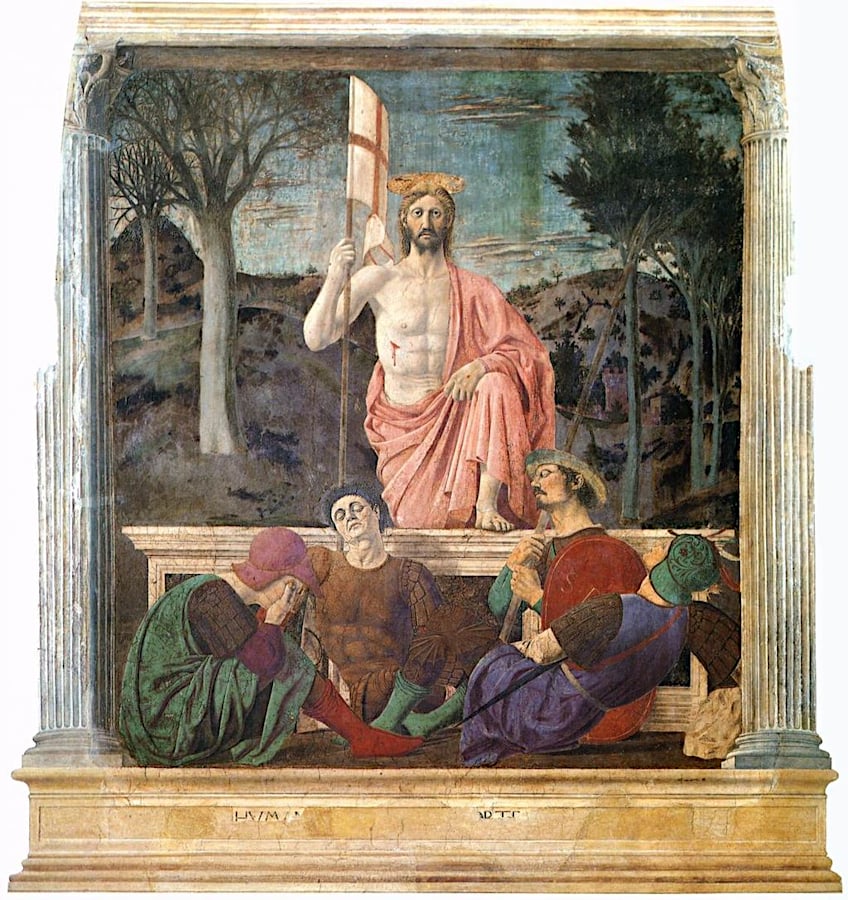
The Italian painter created this mural in approximately 1463 in Sansepolcro’s city hall, which had been held by the Florentines but had lately been reclaimed. The victorious Christ emerging from his tomb after his death, then, might be an allusion to the victory of the town itself, which was titled after the Holy Sepulcher. The existence of the enormous stone in the bottom right-hand corner of the painting supports this since it might be a relic of the sepulcher carried to Sansepolcro by the town’s founders, Egidio and Arcano.
The physical and psychological realism of the individuals he depicts is perhaps the most remarkable aspect of his painting. The famous Italian painter is regarded as one of the Renaissance’s first artists to depict realistic, emotion-filled faces.
Giorgio Vasari claimed that the soldier in brown armor’s face was actually a self-portrait of the artist himself. Even though there is no way for us to know if this is truly the case Vasari is renowned for not always being correct – his inclusion of this element emphasizes the idea that his human figures are not merely made-up “types”, but possess a spark of uniqueness that makes them feel rooted in real-life observations.
Notable Piero della Francesca Paintings
Piero Della Francesca is today considered a key figure in the Early Renaissance, despite having little effect on his contemporaries and knowing little about his early schooling. Della Francesca was interested in mathematics, and his murals and paintings are noted for their superb representation of viewpoint and compositional clarity. Here are some noteworthy Piero della Francesca paintings.
| Artwork Title | Date | Medium | Location |
| Polyptych of the Misericordia | 1462 | Tempera and oil on panel | Museo Civico Sansepolcro, Sansepolcro, Italy |
| Resurrection | 1463 | Fresco | Museo Civico Sansepolcro, Sansepolcro, Italy |
| Hercules | 1465 | Fresco | Isabella Stewart Gardner Museum, Boston |
| The Nativity | 1470 | Oil on panel | National Gallery, London |
| Diptych of the Count and Countess of Urbino | 1472 | Oil on panel | Galleria degli Uffizi, Florence. |
| Madonna di Senigallia | 1474 | Oil on panel | Galleria Nazionale delle Marche, Urbino |
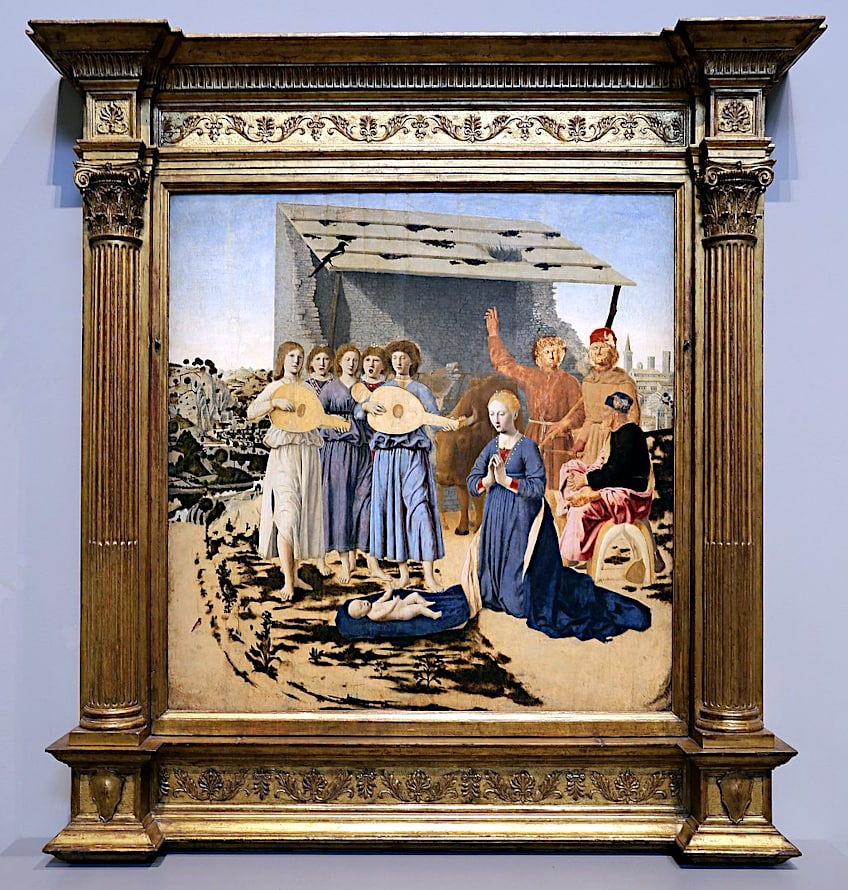
Recommended Reading
Today, we have explored Piero della Francesca’s biography and art style. If this article has sparked an interest in the Italian painter in you, then why not consider getting a book about Della Francesca? Here is a list of Piero della Francesca books that you would enjoy.
Piero della Francesca (2013) by Ana Maetzke
Piero della Francesca is often regarded as the central character of 15th-century art, as well as the most contemporary of all Renaissance artists. His peaceful articulations of building and viewpoint, to our post-Cubist eyes, recall other contemporary traditions and artists, such as Giorgio de Chirico. Yet it was Philip Guston, a key exponent of the artist in the 20th century, who most succinctly defined what draws us to him: “A distinct ardor, sober and sensitive, moves in the light of his drawings. Without our normal passions, he is like a guest to Earth, contemplating distances, gravitation, and important form positions”.
- The first monograph on Piero della Francesca since 1992
- Well illustrated with 150 color plates that include details of paintings
- Written by a conservator experienced in Francesca's technique
Piero della Francesca and the Invention of the Artist (2021) by Machtelt Brüggen Israëls
Piero della Francesca, one of the most original and enlightened artists of the early Italian Renaissance, introduced space, brilliance, and extraordinary finesse to painting. Furthermore, he invented the function of the contemporary artist by becoming a courtier, a traveler, a geometrician, a patron, and many other things. Machtelt Brüggen Israls reconstructs his coming of age in this detailed portrayal of his life and art. She debunks the prevalent perception of Piero’s art being cryptic, revealing the basic and magnificent purpose underlying his work.
- Chronological and contextual review of della Francesca's art
- Provides extensive information and new insight into della Francesca
- Fascinating, concise, and highly informative analysis of this artist
Piero della Francesca was born into an artisan and mercantile family. The Italian painter was in Florence in 1439, and his tenure there was crucial to his growth, with his career as an artist starting with work on the murals in the choir of the church of Sant’ Egidio with Domenico Veneziano. One of the most essential characteristics of Piero della Francesca’s paintings is his blend of Florentine perspective-based painting and Dutch focus on the study of light and natural occurrences.
Frequently Asked Questions
Who Was the Italian Painter Piero Della Francesca?
Piero della Francesca was instrumental in the growth of Renaissance art in Florence and its critical transmission throughout Italy more than any other Italian 15th-century artist. His art is a blend of Italian art, with its emphasis on proportion and space, and Dutch art, with its emphasis on light. While not particularly well-known in how own time, his works would subsequently become highly renowned.
What Was Piero Della Francesca Known For?
His mathematical genius gave rise to a new painting technique, one that began to physically bring objects into perspective. He was recognized as a geometer in the 1400s, penning papers and documents about volume and form computations, as well as creating mathematical equations used for calculating taxes. We have only recently begun to recognize his enormous contribution to art; with his exceptional background in mathematics, he added a sense of reality to his creations, shifting away from the prevalent gilded backgrounds to add scenery and architectural designs that would give a point of view and depth to his artworks.
Isabella studied at the University of Cape Town in South Africa and graduated with a Bachelor of Arts majoring in English Literature & Language and Psychology. Throughout her undergraduate years, she took Art History as an additional subject and absolutely loved it. Building on from her art history knowledge that began in high school, art has always been a particular area of fascination for her. From learning about artworks previously unknown to her, or sharpening her existing understanding of specific works, the ability to continue learning within this interesting sphere excites her greatly.
Her focal points of interest in art history encompass profiling specific artists and art movements, as it is these areas where she is able to really dig deep into the rich narrative of the art world. Additionally, she particularly enjoys exploring the different artistic styles of the 20th century, as well as the important impact that female artists have had on the development of art history.
Learn more about Isabella Meyer and the Art in Context Team.
Cite this Article
Isabella, Meyer, “Piero della Francesca – The Original Renaissance Man.” Art in Context. January 25, 2023. URL: https://artincontext.org/piero-della-francesca/
Meyer, I. (2023, 25 January). Piero della Francesca – The Original Renaissance Man. Art in Context. https://artincontext.org/piero-della-francesca/
Meyer, Isabella. “Piero della Francesca – The Original Renaissance Man.” Art in Context, January 25, 2023. https://artincontext.org/piero-della-francesca/.


